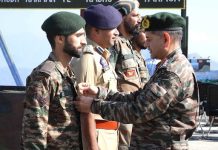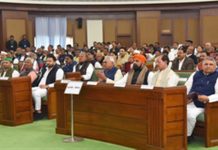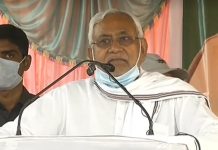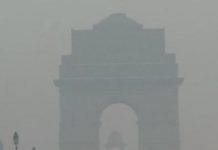 In 2017, security forces killed 210 militants in Jammu and Kashmir, most of them local youths from South Kashmir. This is the largest number of militants killed in a year in the past seven years. Among those killed were around 15 top commanders from Hizbul Mujahideen, Lashkar-e-Toiba, Jaish-e-Mohammad and the newly established Al Qaeda affiliate Ansar Gazwat-ul-Hind.
In 2017, security forces killed 210 militants in Jammu and Kashmir, most of them local youths from South Kashmir. This is the largest number of militants killed in a year in the past seven years. Among those killed were around 15 top commanders from Hizbul Mujahideen, Lashkar-e-Toiba, Jaish-e-Mohammad and the newly established Al Qaeda affiliate Ansar Gazwat-ul-Hind.
So is militancy in Kashmir once again on the way to decline on the pattern of what had happened following 9/11? New figures will tell you so. From around 300 active militants in the beginning of this year — the highest such number in a decade — the figure has come down to around 200. Similarly, as against around 100 local youths who joined militant ranks during the six-month-long post-Burhan unrest last year, the local recruitment this year enhanced to 117 militants. Supplemented by more than 70 militants which infiltrated from across the border, the number has again gone up to around 200.
The security agencies have christened the ongoing campaign against militancy as Operation All Out. The objective is to eliminate insurgency by attempting to kill all the militants within a specific time frame. Viewed from that perspective, the security agencies have been exceptionally successful this year. And if the killings continue at this rate for another three months, it could drastically reduce the number of active militants. This, in turn, is expected to alter the political dynamics in the Valley, albeit not fundamentally so. The deeper factors underpinning the current state of affairs will linger on and can be expected to gestate conditions for yet another phase of violence and unrest.
But so far the union government has refused to look beyond a security-centric approach to the situation. Apart from a low-key political outreach, that is. For the Centre, the path to stability in the Valley is linear and literal: wipe out the militancy and peace will follow. And to achieve this end, all possible measures are being undertaken.
In June, the government moved 2000 more troops to parts of South Kashmir most affected by militancy. This reinforced the existing heavy troop presence in the area. Similarly, six Army camps have been set up across Shopian in a throwback to the massive concentration of troops the district had witnessed in the early nineties. The government has also gone back to the nineties’ style Cordon and Search Operations, popularly known by its abbreviation CASO. This keeps militants on the run and also makes it easier to track them down — albeit, the human and electronic intelligence have been the predominant sources of information for the security agencies.
In addition to this, the union government has embarked on a plan to further strengthen the fighting capability of J&K Police and the CRPF by procuring for them bullet-proof vehicles, vests and the latest equipment. During one of his visits to the state, Union Home Minister Rajnath Singh said that the Centre has already released funds for this purpose.
However, while frequent killings has dealt a blow to militancy, there has been no corresponding improvement in the situation. In fact, from a defensive posture, militants have often gone on the offensive. This year there have been sensational attacks like the one on the Pulwama police lines which killed eight security personnel and the one on a security patrol near the critically important Banihal tunnel which killed one constable. There was also one on the BSF camp near Srinagar airport in which one ASI was killed. Or for that matter, the attack on the State Minister for Public Works Naeem Akhtar during his visit to Tral which led to the death of two civilians and injury to several others.
“The reason for this is that while the killings may have brought down the number of militants, some more local recruitment and the fresh infiltration has to some extent replenished the shortfall,” a police officer told Tehelka on condition of anonymity . However, as the current figures stand, not all the heavy loss has been compensated. As it is, the number of militants now hovers around 200, which is about 100 militants down from the early post-Burhan period.
But security experts don’t see it as a setback for the militant groups. “Between 150-200 is an ideal number for militants and also for their managers in Pakistan. Three hundred is an unmanageable number for them. They are liable to be tracked down and killed. The killings this year is a case in point,” said the police officer, adding that ideally Pakistan would want around 200 militants operating in Kashmir with an equal proportion of foreign and local militants.
“There is a method in keeping the number of militants smaller. Pakistan wouldn’t want locals to dominate lest this compromises the jihad. For example, with security forces piling on more pressure, all locals could surrender. But the presence of the foreigners keeps this tendency in check. Another drawback is that more local militants could trigger rebellion. Zakir Musa’s is a case in point. He has gone against the Pakistan-based militant leadership,” the police officer explained.
The local-foreign militant combination is also important because they complement each other, the officer continued. “One, local militants are not sufficiently trained and as such don’t have fighting capability. So foreigners who are more professional compensate for that,” the officer said. “But the locals have a critical role. They act as shelter givers and guides to the outsiders”.
What does the near future hold for Kashmir? A lingering uncertainty. Security experts hope that should the current uptick in the killings continue, they would have substantially reigned in the militancy by the onset of spring. But killings have hardly been a deterrent in the Valley. Though local recruitment has dwindled somewhat, it hasn’t stopped which it did for some years from 2005 onwards. For it to stop now, the overwhelming public support that drives it has to come down.
“If not the foreign then certainly the local component of the militancy can be reigned in,” said the police officer. “But for that to happen, the public support has to moderate if not completely disappear”
letters@tehelka.com











